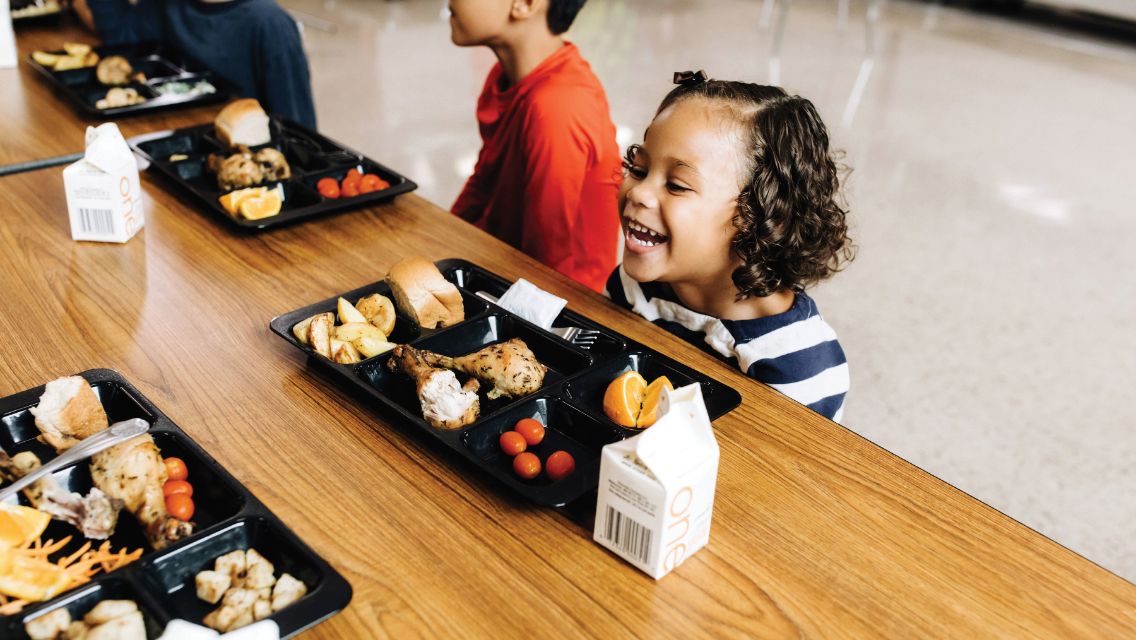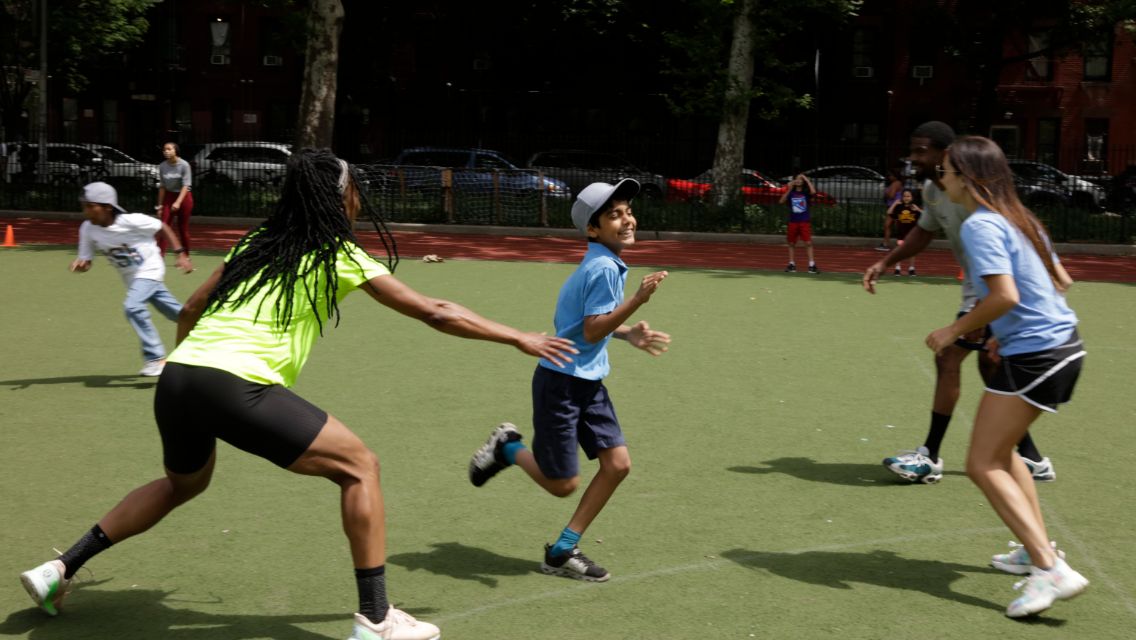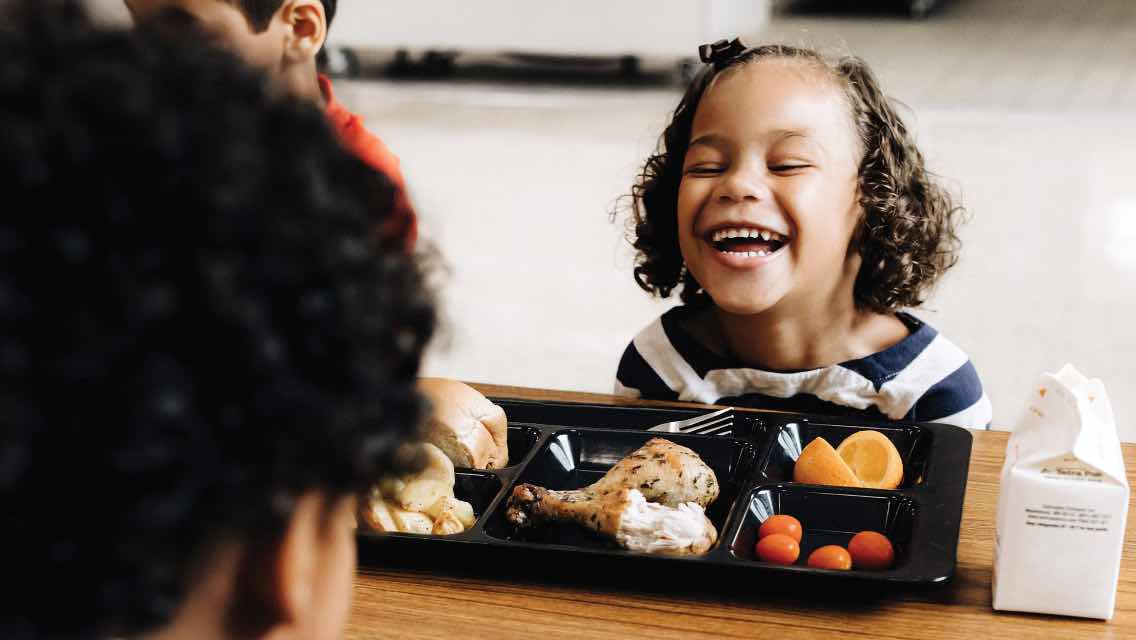Life Time’s mission is to support a healthy way of life for everyone, including our youth. We know that children who adopt healthy behaviors when they’re young are more likely to maintain those habits as they grow. Yet our world today makes these choices challenging — and even more so for certain populations, such as those impacted by racial, education, or health inequities.
In 2003, the Life Time Foundation was founded with the goal of making a healthy way of life more accessible for kids. Its efforts originally focused around donating to nonprofit organizations aligned with Life Time’s values. Then, in 2010, the Life Time Foundation’s endeavors transitioned to primarily concentrating on partnering with school districts to serve the most nutritious (and delicious) food possible. This past year, youth movement was added as a main area of effort alongside nutrition.
To learn more about its initiatives so far and what’s to come, we spoke with Valeria La Rosa, senior program manager, and Marnie Wells, executive director of the Life Time Foundation.
Life Time Editorial | For those who are unaware, what is the Life Time Foundation and what is its mission?
Valeria La Rosa | The Life Time Foundation is a public nonprofit and the charitable arm of the Life Time family. Our mission is to help all children get started on their healthy-way-of-life journey.
We partner with schools and community organizations across the nation with the goal of improving youth health. We do this by supporting schools in serving minimally-processed foods, and providing funding to schools and organizations working to help kids participate in safe, fun, and enriching physical activity. We mostly focus on aiding historically underserved youth — with a hope of helping them find a love for healthy living and better life outcomes.
Because Life Time covers all of our administrative costs, 100 percent of every dollar contributed to the Life Time Foundation directly supports our programs and grantmaking.
LTE | What problems and obstacles are today’s children facing when it comes to healthy eating and exercising?
Marnie Wells | In 2018, there was a study that found that 67 percent of the calories consumed by children and adolescents that year came from ultra-processed foods. Dietary habits worsened for many with the pandemic, and today, for the first time in the United States’ history, childhood obesity has surpassed 20 percent. More than one in five children in our country suffers from obesity which impacts numerous aspects of their health.
Factors such as less-frequent movement and lower-quality calories contribute to this problem. While nutrition and exercise are just part of the obstacles our youth is faced with today, it’s where we’re focusing our efforts to help kids give their bodies the opportunity to flourish.
For many kids, the meal they eat at school is the only full and the most nutritious meal they’re getting in a day. Of the 29.5 million children who eat school lunch each day, 74 percent of them qualify for free or reduced-price lunches. Providing support to food service professionals so that those meals are as nutritious as possible is at the core of our mission.
We also know there are a lot of opportunity gaps to enjoying physical activity, joining a team, learning a new skill, making new friends, and moving their bodies. It’s an economical and a cultural issue.
To add another layer, we’re still coming out of the pandemic, and there’s still such a disconnect in the sense of community, along with everyone also being so plugged in to technology. It’s estimated that children spend approximately seven hours a day in front of an electronic device, so it’s practically like it’s their full-time job. We know that’s not good for their brains or their social and emotional skills, and it keeps them sedentary.
VLR | When kids are eating healthy and being active, they tend to make better choices, do better in school, and be more positive and joyful overall.
There’s so much great work taking place in school kitchens. And also so much collaboration between school food service professionals and nonprofits to accelerate change across the nation. I think it’s important to recognize that they do this while facing many challenges, such as supply-chain issues, staffing problems, and very small budgets, which, on average, allow for $1.71 in food costs for each lunch.

LTE | What work is the Life Time Foundation doing to accomplish their mission?
VLR | On the nutrition side, we have partnered with about 35 school districts across the country at the district level — serving approximately 3,630 school sites and impacting about 1.7 million children — and we have provided grant funding so they can purchase cooking equipment and helpful software to make their programs more efficient, as well as train their staff to be able to prep more scratch-cooked meals.
Through those and other initiatives, we remain focused on the elimination of ultra-processed foods in school meals. Our total nutrition grants to date are near $7 million.
We are excited about our most recent development of an online tool called Green Onion. Green Onion is free for any school district (and purchasing cooperatives) to use to analyze their food products for ingredients of concern.
Schools can create an account, upload their food labels to identify ingredients of concern, and find healthier alternatives. This tool has the potential to help expedite change across the country. Up until a few months ago, our team’s dietitian, Megan Flynn, analyzed each label one by one. This tool automates this process and allows us to broaden our reach.
On the movement side, we are passionate about getting kids moving every day. In 2022, we gave approximately 20 different grants — totaling more than $600,000 and impacting more than 25,500 children — to communities across the country. These grants are being used to help encourage kids to be active before they go into the classroom, provide access to organized sports for historically underserved youth, bring yoga to indigenous communities, and provide many more opportunities depending on the community. We are starting to learn the results of these grants and are pleased to have positive feedback thus far.
MW | We are shifting our work a bit heading into 2023; we want to stay focused on creating an ecosystem around the impact that Life Time and the Life Time Foundation have on the community and the children who are in those communities. So we are focusing on opportunities to reach out to local nonprofits in the communities we serve, primarily those where we have our bike and run events.
For example, we currently have a wonderful, long-term relationship with the Leadville, Colo., community due to our two iconic races: the Leadville Trail 100 Run and the 100 MTB. We want to provide a great race experience of course, and then when we physically leave the town, we want to leave a positive impact on the community by partnering with local school districts and nonprofits.
In Leadville, for instance, we’ve worked with a nonprofit called Cloud City Wheelers to help provide more trail access for kids to get on their bikes and ride.

LTE | Can you expand on the Green Onion tool and how it’s used by school food professionals?
VLR | The Green Onion is a free tool that flags ingredients of concern according to the “Ingredient Guide for Better School Food Purchasing.” This guide was created by school food service professionals with the support of nonprofits like ours, along with science-based findings from the Center for Science in the Public Interest. The guide is updated annually to ensure any new, potentially harmful ingredients are included.
Green Onion helps schools implement the ingredient guide. Most schools don’t have the support of a dietitian to review each label as they plan their menus and do their purchasing — but Green Onion is able to help with that. Once ingredients of concern are automatically pointed out, Green Onion also helps identify healthier alternatives.
The ultimate goal is to ensure that all children across the country — regardless of their economic status — are provided with the best quality food possible.
As more school districts, purchasing cooperatives, and nonprofits use it, the database of K12 products will grow over time, and increase access to better product ideas for all users. Also, over time, the free software tool will evolve and improve based on the user’s needs.
For example, we plan to expand the allergens page to provide a more comprehensive and personalized dashboard, detailing 600 possible allergens in their products and future products. So far, the feedback we’ve received has been really positive.
Up until last year, we were only partnering with 35 school districts. Now, we are reaching 313 school districts — and this is still just within our pilot phase. The potential of this tool is really promising.
MW | I love how Val says Green Onion will “accelerate change.” We are working at a systems level and impacting the common good in a very fast and technically savvy way. There’s a lot of pride around this tool that the Life Time Foundation created and how we’re impacting our systems with it.
LTE | Why do you feel personally passionate about the Life Time Foundation’s mission?
MW | I recognize that I was raised in a family that valued healthy food and moving our bodies, and I had the privilege to do both — I could eat healthy food, get on a bike, swim in a pool, ride a horse, or take ballet.
Truly any opportunity my sibling and I had as children to connect with other kids while moving our bodies helped build our social and emotional skills. It certainly gave me a sense of pride, confidence, and autonomy over my body that otherwise would be lacking.
I know that there are barriers for children. I really believe I am on this earth to remove those barriers so kids can have healthy options and opportunities to grow, learn, and stretch.
VLR | I also was very privileged because my parents were very focused on getting us to do physical activities and my mom encouraged us to eat all the healthy foods.
The reason I started working for the Life Time Foundation had to do with my previous work experience. I used to work for another foundation where kids were dealing with tough medical conditions or fighting terminal illnesses, in many cases. I realized that I wanted to help children not get sick, especially because my friend’s kiddo had just passed away from cancer, and she kept on wondering why the doctors wouldn’t talk to her about how food can impact health.
When I joined the team, the Life Time Foundation was only focusing on nutrition, and now we have a movement focus, too. I keep thinking to myself, Can this get any better? Eight years later, I’m still pinching myself because I love what I do.
LTE | If someone is interested in donating to or learning more about the Life Time Foundation, how can they do that? Are there other ways to get involved?
VLR | Visit LTFoundation.org and click the link at the top of the page that says “Donate.” Or, if someone wants to become an athlete with the Life Time Foundation, they can find the information for that on that website as well. There’s more information on our programs there, too.





